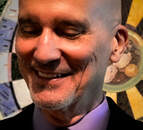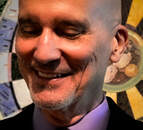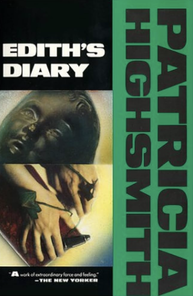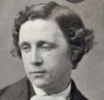A WRITER'S WIT: |
MY BOOK WORLD

Wow! How do I begin?
Full disclosure: I’ve been a fan of Barbra Streisand since 1962 when I was fourteen, and, from the speaker of an AM radio, emanated this crystalline voice. It lifted me across the room like a wonderful fragrance. I thought, God, I’ve got to hear more of her. And so I did. Decades of albums later (most of which I own in one medium or another). I bought both the hardcover ($31) and the Audible version ($61) of this book, so you know I’m serious when I declare I’m a fan. Her work has always cost more than that of other artists, and I’ve always paid it. You get what you pay for, and her case it is great artistry.
This memoir might better be subtitled as an autobiography because it covers every minute, every inch of her life—album by album, show or concert by concert, and film by film. At first, I am a bit disconcerted, as I follow along in the hardcover, that she does not read the text word for word. Her prose is quite engaging—rich and varied. But she adds so many asides, creating more of a conversational tone in her book, that I’m grateful for the audio version, as well. It must have taken her months to make the Audible recording, and yet her voice never wavers (except by way of certain emotions); it sounds as if she recorded the 900+ pages (48+ hours) in one smooth session. This woman does nothing by half.
And perhaps that is the crux of Streisand’s book: She means to tell her own story her own way, after decades of being misrepresented and misquoted again and again. Myth Number One: Barbra is hard to work with. Nope. She quotes from directors, actors, and other professionals she’s collaborated with that because of her exacting nature, she is a joy to work with. Because she collects discerning individuals around her, she creates a fine synergy, by which the highest quality is sought after by all. Exceptions exist, like the late Ray Stark, producer, to whom Streisand is tied for her first five films. He is a lying, conniving person who cheats her in several ways, and she can’t wait to be free of him. In some ways (creativity mainly), her career does not begin until he’s nowhere near her career.
Myth Number Two: Barbra loves to perform. For the first time, I learn that every time she must appear before a live crowd to sing, the experience frightens her to death. She loves performing in the studio, making albums. She is deeply emersed when appearing in or directing a film. Yet, later in her career, she does “conquer her fears,” a line of dialog I borrow from her concert in New York’s Central Park (1967). Over time, she learns to trust her audience, to include them as a collective partner.
Myth Number Three: Barbra is a cold b———. You should read all the adoring notes, letters, and reviews that people write. You should hear of the friendships she develops with other actors, directors, musicians, artists, and professionals close to her. Marty, her agent (manager?), at ninety-something, is still with her. Renata, her personal assistant-housekeeper-chef-chauffeur has remained with her for over sixty years. You don’t retain that kind of loyalty by being unkind.
Then there is the personal. Barbra confesses (we’ve always guessed) how the loss of her father at an early age affects her entire life. She describes the rocky but loving relationship with a mother who, it turns out, is so jealous of her own daughter’s success that she often turns a cold shoulder to Barbra—even skipping an important performance in Las Vegas to play the slots with her friends. Barbra shares the details of the romances in her life (those whom she loved and those who loved her): Omar Shariff, Marlon Brando, and others not so well known. An entire chapter she devotes to her husband of twenty-five years: (hello, gorgeous) James Brolin.
Though she may have had an editor to help her shape the book (what published writer doesn’t?), Streisand’s prose, both conversational and formal at times, is her own. After all, the woman has written screenplay treatments, screenplays, and another book besides. (Songs!) Like everything else she does, Streisand approaches this book with love and exacting detail. If you like her at all, or if you are curious, pony up and either read or listen to the book (or both, as I did). You won’t be disappointed.
Oh, and as a bonus, whenever Barbra Streisand explains how a certain album is developed, she includes sound snippets from the tracks to demonstrate what she is talking about. Sublime. Sublime. Sublime. Sit in on the best master class ever!
Coming Next:
TUES: A Writer's Wit | John Dufresne
WEDS: A Writer's Wit | Laura Lippman
THURS: A Writer's Wit | S. J. Perelman
FRI: My Book World | Jennifer Egan, Manhattan Beach























 RSS Feed
RSS Feed